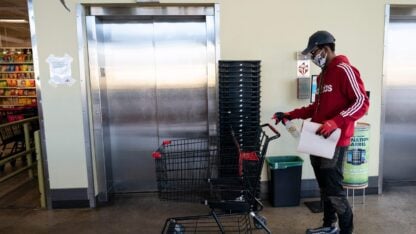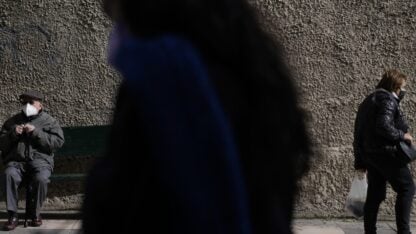At one Clayton County middle school, staff take on extra duties to keep things running
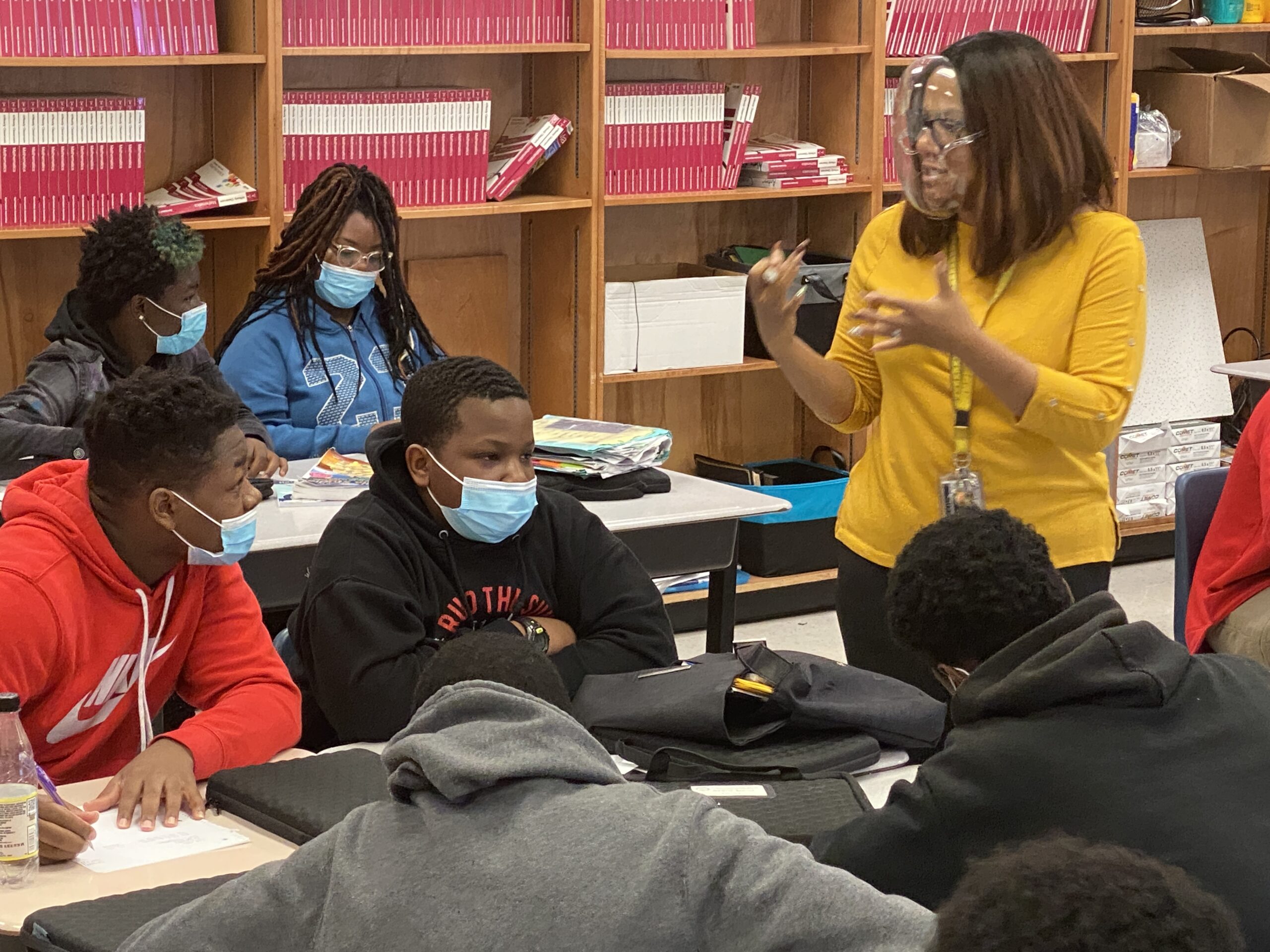
Math teacher Dawn Wiley teaches two classes simultaneously. One is her regular class; the other is connected to her computer system.
Ronald Shields / Clayton County Public Schools
Atlanta area schools have re-opened, but things look a lot different now due to COVID-19. At Sequoyah Middle School in Clayton County, students come into the building and immediately scan their wrists or foreheads in front of an infrared thermometer. If their temperature is normal, the thermometer beeps, signaling them to keep walking. Masks are required in the district, so if students don’t have one, they can pick one up here at the entrance. They can also sanitize their hands.
Supply Chain Woes
Like most Atlanta districts Clayton has a shortage of school bus drivers. That means students are often coming to school late through no fault of their own.
“We start at 8:45,” says Principal Melanie Conner. “That’s the time the students are supposed to be in their homerooms and starting class. But our latest buses on average this year have been coming in as late as 9:25.”
Bus drivers aren’t the only shortage. The global supply chain shortage has affected food service delivery, so the district has developed a “key-lock” system, where delivery drivers can let themselves into school kitchens after hours so workers don’t have to stay late.
It just dawned on me: if I had a camera that picked up my voice, as long as someone’s in there monitoring, whether they teach the class or know the subject or not, I can deliver something to the scholars.” — Dawn Wiley, math teacher at Sequoyah Middle School
Substitute teachers are also hard to find.
“At one point, we had 23 classes we had to cover,” Conner says. “It was from the vacancies, it was from the number of teachers that had to go out through contract tracing for COVID, and then your regular emergencies, and then also in some cases you have in some schools with some teachers who are on…family medical leave. I have three of those.”
Some days there aren’t enough substitutes to cover classes, so teachers keep an eye on two classes at once. Some teachers give up their planning periods to cover other classes. The PE teachers even help monitor students in the gym. That helps with social distancing since kids can spread out on the bleachers. They do this is in addition to teaching their own classes.
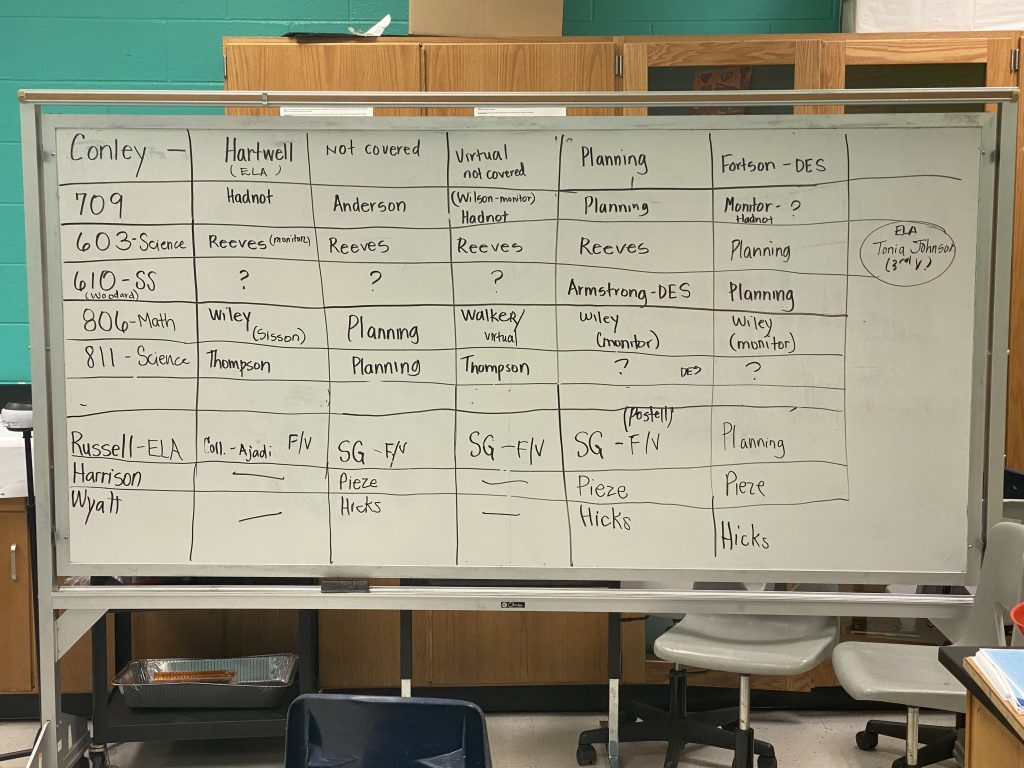
Then there’s math teacher Dawn Wiley who came up with a new idea. She’s teaching her own class and another class where the teacher is out at the same time. She is linked up by video to class 806, down the hall from hers. Wiley guides both classes through the same math problems. There’s another teacher physically in Room 806 to monitor the students. Wiley, meanwhile, physically moves between the two classes. She came up with the idea when she was teaching remotely via Zoom.
“It just dawned on me: if I had a camera that picked up my voice, as long as someone’s in there monitoring, whether they teach the class or know the subject or not, I can deliver something to the scholars,” she says.
Although most Sequoyah students have opted to return in person this year, Conner says about 136 chose to stick with remote learning. So, teachers like Bradford Hadnot teach students face-to-face and via video screen at the same time.
“It’s a lot of students,” Hadnot says. “I have 33 in this class and then I have 41 virtual. So it’s a lot of hassle until I got it organized. That was the biggest struggle: organization and then communication.”
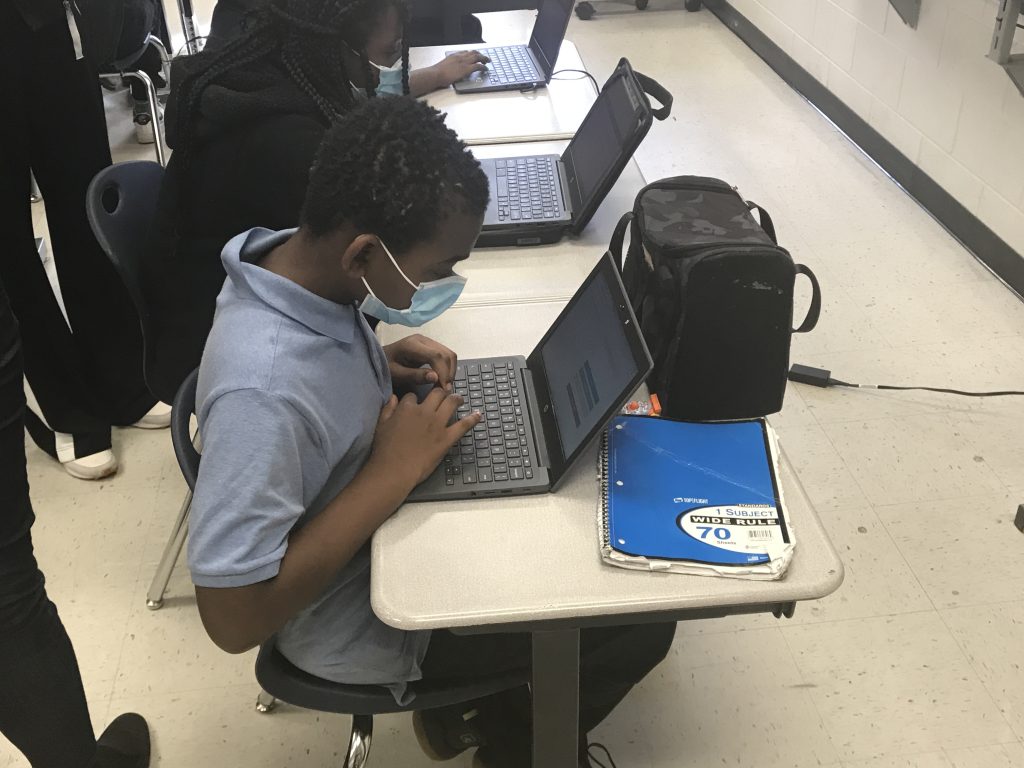
Some of his students are in the hallway working on a project. Elizabeth Navarro-Lorenzo and Tamiah Sims say they’re glad to be back in school after a year of remote learning.
“I like it. It’s easier for me to learn in person,” Elizabeth says.
Tamiah says she couldn’t consistently access assignments when learning from home.
“There’s a lot of problems with the Wi-Fi all the time,” she says.
A ‘Circle of Support’
School districts across the country have received millions of dollars in federal stimulus money. Many school systems, including Clayton, are using a portion of it to address mental and emotional health. More than 140,000 children in the country have lost a caregiver to COVID-19.
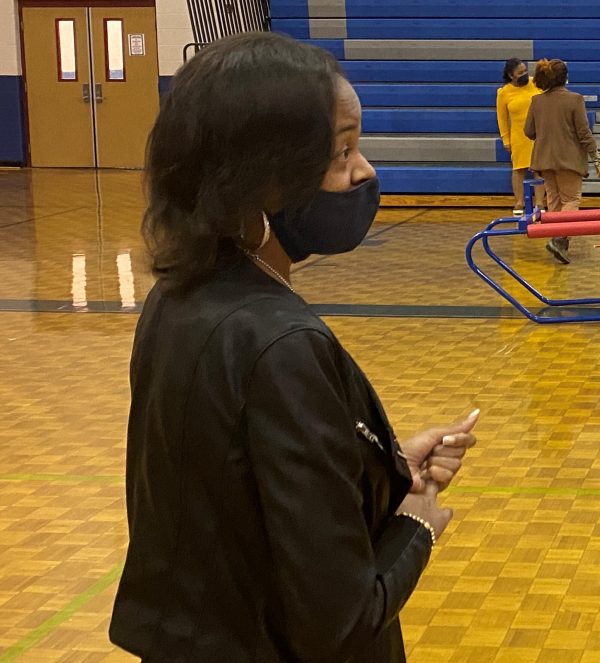
Sequoyah has a ‘situation room’ where students can go when they’re feeling anxious or are having a bad moment. The room has bean bag chairs, sofas, and soft lights. Before the pandemic, it was used for small group sessions with counselors and the school psychologist. Conner says students identified as “at-risk” of having academic, emotional, or psychological challenges would typically spend six to eight weeks in what she calls “the circle of support.”
“A lot of our kids graduate out of the circle of support, which is a proud moment,” Conner says. “But then there are days when I’m having a bad day, ‘Miss Connor, I can’t take it. I need five minutes. Can I go to the Situation Room?’ ‘Yes, you can. You can go in here, take a moment, breathe, get it together, and then go back to your class.’”
The entire school staff has adjusted the way they work this year to make sure students can continue to learn in person. Head custodian Gwendolyn Cennett says at the beginning of the year, her staff installed plastic shields on students’ desks. Rooms are cleaned with a fumigation machine, purchased by the school district.
“We have to go in now once a day—the beginning of the day or the end of the day—to make sure we sanitize each classroom,” Cennett says.
Conner knows this kind of intense work takes a toll on the staff. She says they don’t complain and take on extra responsibilities when they can.
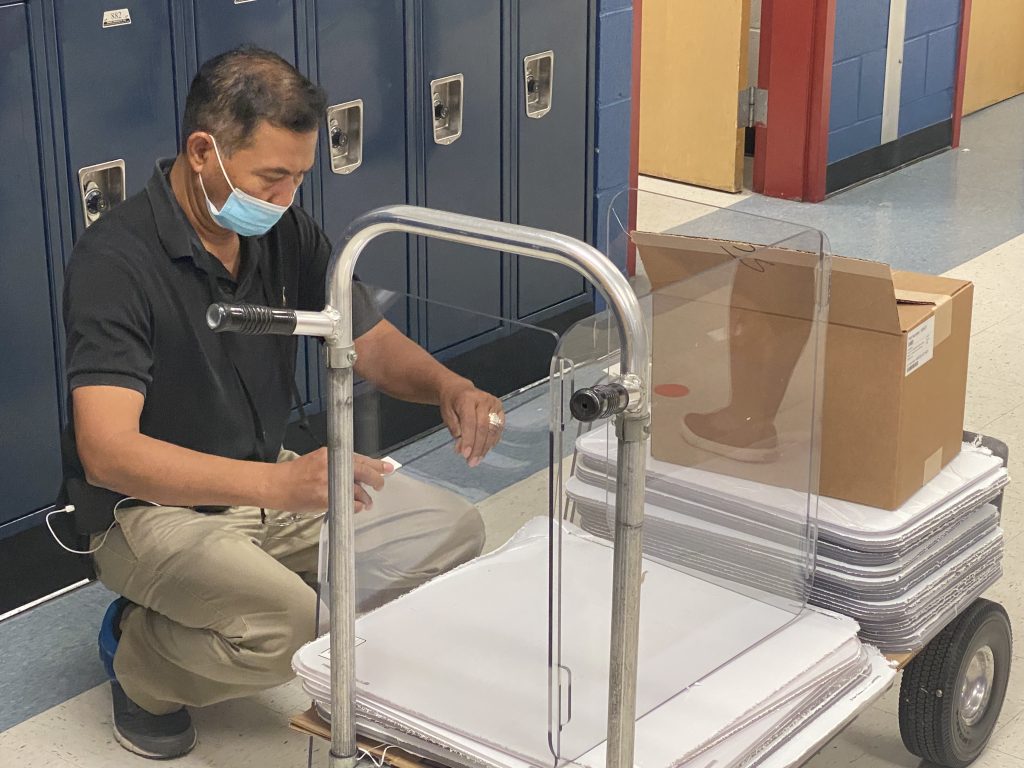
“We love that, but we also appreciate and honor it whenever we can with celebrations of some sort,” she says. “We may be giving out Chick-fil-A gift cards at the end of the day or Wendy’s free coupons.”
Conner wishes she could do more. But for now, she says, she’ll do what she can to show her gratitude to teachers, custodians, and cafeteria workers who serve these students during a pandemic.
